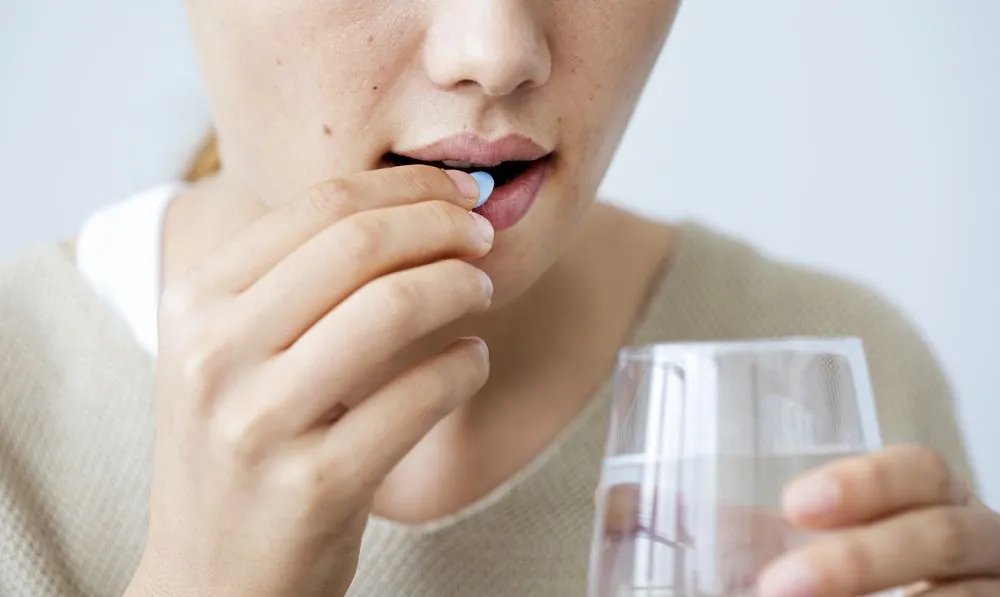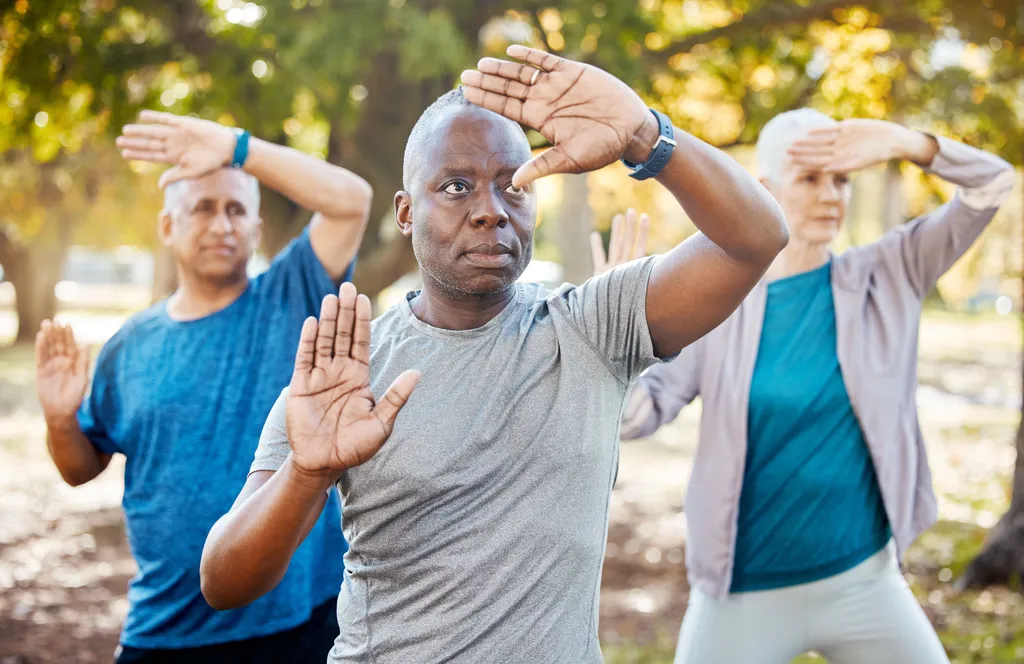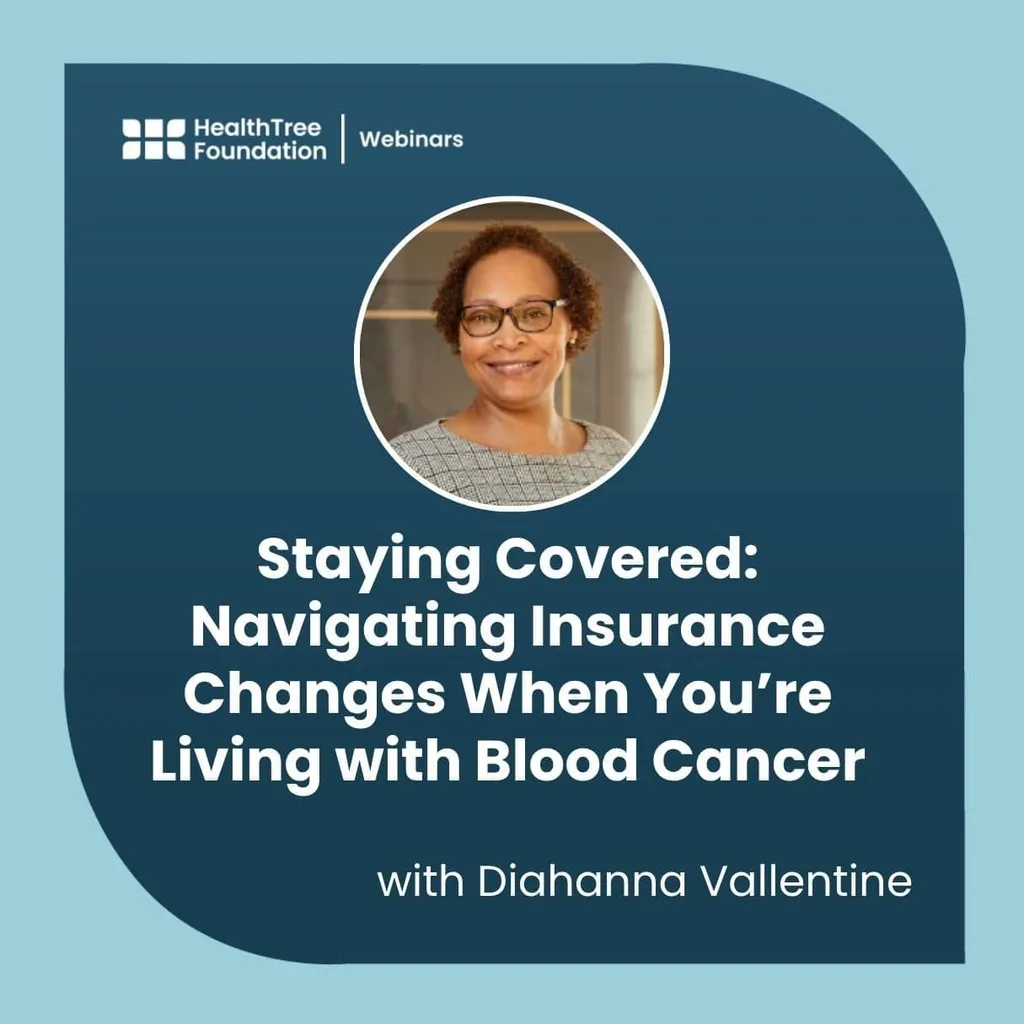My Journey with Clinical Trials: Monika Robinson

My journey with IgA Kappa Multiple Myeloma began in January 2015, when I had a bone marrow biopsy that revealed a plasma cell percentage of 60% and 226 mg/dL kappa light chains. Thus, I started RVd induction therapy for 5 months before receiving a stem cell transplant at OHSU in Portland. At the time, the doctor promised three to five more years with this treatment, and a little more time if I received the stem cell transplant. I followed my doctor's orders to the letter and came back to work after some months, but 16 months after the transplant, the myeloma returned.
I had two doctors with two different ideas. My doctor in Eugene said, just go to daratumumab and do a new chemo treatment. And the doctor at OHSU said, “Oh my gosh! It's all because you didn't do a maintenance plan, your stem cell lasted only 16 months, you need another stem cell.” I was solely listening to the doctors, but when it came back, I thought, "Oh my, I better get a second opinion." So, I went to the Mayo Clinic in Scottsdale, which is one of the top research trial institutions in the country.
At the Mayo Clinic, Keith Stewart, a brilliant doctor who now runs the Princess Margaret Cancer Centre in Ontario, said, "Monika, they're both right, you need to do the stem cell again, reboot, and this time try with daratumumab." At the time, dara wasn't available in Eugene, but I was able to get it here in Oregon before many others thanks to my great doctor at Mayo. I was at the very beginning of the clinical trial before it was subcutaneous, and they were still figuring out the doses. I did an induction with Daratumumab, Pomalidomide, and Dexamethasone for five months and then prepared for the second stem cell, which was in August 2017.
Because even with a transplant, the maintenance plan is the most important thing, as it doesn't get rid of the drug plan. I kept on maintenance with DaraPd, never skipping chemo. Then I applied for disability for two years, because I didn't know where I was going with two stem cell transplants.
Sure enough, in January 2020, after 18 months, my numbers began to double again. We knew things were happening rapidly, I had a translocation 14;20 and monosomy 13. I went from 1.57 mg/dL kappa light chains to 7.52 mg/dL, and that was how far the stem cells took me. However, I had more options, I could go to any hospital because now I’m on Medicare.
I asked Dr. Stewart at Mayo, "What do I do now, can you just put me on some chemotherapy, and maybe try treatment in Arizona, cause it's cold and ugly in Oregon?" I was in such a bad mood because of everything, and he replied, "Well, looking at your past, would you be interested in a trial?” and I said, "I know everything about all the trials, you have the bb2121, you have the CAR-T, the KarMMa...” and he says, you know, laughing, “Okay, well alright”. He made a couple of calls right there in the office, and they said, okay, you're at the top of the list at our facility for this CAR-T. I qualified on every criterion except my kappa light chains number, which had to be at least 10 to get into the trial. Because everyone has a role to play, if they know you're such a strong advocate for your own health, you'll be a great candidate for a clinical trial!
I feel that HealthTree and Spark Cures were instrumental in helping me get into a trial. I used to carry 4 binders of medical history, which were of little help for my doctors. Thanks to HealthTree, I have everything printed in a brief comprehensive way. I learned everything I needed about myeloma in HealthTree University. And thanks to the collaboration between Brian McMahon and HealthTree, I am aware of every clinical trial now taking place in the United States to which I can apply. That's what I'd tell every patient: "You can watch cancer grow, but if you know something, you feel in control of your illness." And you can walk in with some intelligence and say, "Doctor, this is what I need, and this is what worked and what didn't work."
In February I was at 7.7 mg/dL kappa light chains, and at the beginning of March my numbers were 9.3, I called and said “I'm awfully close to qualifying for the trial!” and they said okay, get all of your lab tests next week. But my local clinic in Eugene, Oregon wouldn't do it for two weeks, because you can't just walk in and say do this. On March 23rd I was at 10.3 and I called and said “I'm coming! I'm coming!” But they said, “Monika, we closed all the trials for Covid.”
I was devastated, and now my cancer was growing rampantly. It wasn’t going to be a pretty thing to start a new round of chemo, but the doctor said, "We have a bispecific antibody clinical trial, 80 people are doing it globally," and I said, "Count me in!" It was a trial with cevostamab which was approved during COVID because although it has a similar mechanism to the CAR-T therapy, it's an infusion, so you're not as immunocompromised since they're not taking your cells out. The doctor told us, "Be here in four days, and you can't fly." So, we went out and bought a new car because we didn't think our little 13-year-old Prius could handle the trip from Oregon to Arizona.
Four days later my husband drove me to the hospital, where I was admitted. My kappa light chains were at 14.4 by April 3rd, demonstrating how quickly the disease was progressing. My first dose was given on the first Monday of April. It was a 4-hour infusion of 30 mg, after receiving a third of the dose I began to get the shakes and said, "Oh boy, this is not good," to which the doctors replied, "No no, it's working!”
My kappa light chains had gone from 14.4 to 11 by the time they tested them on Friday. To which my doctor responded, “Monika, let's not be too excited yet.” I proceeded to have my next dose, which was 90 mg. By the following Friday, my kappa was 0.0267. Then Dr. Rafael Fonseca, a remarkable doctor who does a lot of presentations and talks about myeloma, comes in and shakes my hand! He said, ”You are the Poster Child!” We were overjoyed, but then we looked at each other and said laughing “We can’t be shaking hands, there is COVID! We better wash our hands.”
In Glendale, I established a multiple myeloma house where people can go if they need a second opinion or to receive treatments at nearby hospitals. One of my friends from Eugene, Oregon has already visited, he was able to get into a CAR-T and use the house to undergo his treatments at Mayo Clinic.
The plan for my trial was 17 infusions over 12 months, but I had a minor setback and we had to skip a month. The trial was still on Phase 1 and they were still figuring out the correct dosages. The treatment began with a six-hour infusion, but they sped it up as it progressed. I did 90 mg for the majority of the time, then 60 mg for the last four months. The current dosage in the trial is 130 mg infused over shorter periods of time.
My friend and I are doing great, but if either of us has a setback, we can switch to the other treatment because they are not mutually exclusive. My trial is now in Phase 2 accepting 200 patients worldwide. It's truly amazing, with the fewest possible adverse effects. I had little bumps on my body, which only needed some lotion, some tiredness, and one day a month I got steroids and couldn’t sleep. But it's nothing like any of the other treatments, I've tried them all, and this has the fewest side effects.
Because the results were so good, my Eugene doctor insisted on seeing me in person when I returned in June. He took three bone marrow biopsies at separate times. I'm currently MRD negative at 10 to the minus 6!
After 6 1/2 years of being on chemo, I am now on no drugs, not even a vitamin. My three-month check-up was on September 13th, and I haven't been healthier in six and a half years! When you first learn that you have multiple myeloma, you ask yourself what do you want from your life. After a week or two, you begin to think, "I simply want to have a normal day in my normal life." To be able to go out on the boat with my family as we used to, without any concern, was a dream come true.
Editor's Note: Monika's story is a story many of us have experienced. The need for a myeloma specialist to help diagnose, create treatment plans and catch early relapse is key. To find a myeloma specialist, click here. Additionally, if you are considering any immunotherapy as a treatment or are on one of these therapies, please join our Immunotherapy chapter with monthly meetings on a variety of topics.
My journey with IgA Kappa Multiple Myeloma began in January 2015, when I had a bone marrow biopsy that revealed a plasma cell percentage of 60% and 226 mg/dL kappa light chains. Thus, I started RVd induction therapy for 5 months before receiving a stem cell transplant at OHSU in Portland. At the time, the doctor promised three to five more years with this treatment, and a little more time if I received the stem cell transplant. I followed my doctor's orders to the letter and came back to work after some months, but 16 months after the transplant, the myeloma returned.
I had two doctors with two different ideas. My doctor in Eugene said, just go to daratumumab and do a new chemo treatment. And the doctor at OHSU said, “Oh my gosh! It's all because you didn't do a maintenance plan, your stem cell lasted only 16 months, you need another stem cell.” I was solely listening to the doctors, but when it came back, I thought, "Oh my, I better get a second opinion." So, I went to the Mayo Clinic in Scottsdale, which is one of the top research trial institutions in the country.
At the Mayo Clinic, Keith Stewart, a brilliant doctor who now runs the Princess Margaret Cancer Centre in Ontario, said, "Monika, they're both right, you need to do the stem cell again, reboot, and this time try with daratumumab." At the time, dara wasn't available in Eugene, but I was able to get it here in Oregon before many others thanks to my great doctor at Mayo. I was at the very beginning of the clinical trial before it was subcutaneous, and they were still figuring out the doses. I did an induction with Daratumumab, Pomalidomide, and Dexamethasone for five months and then prepared for the second stem cell, which was in August 2017.
Because even with a transplant, the maintenance plan is the most important thing, as it doesn't get rid of the drug plan. I kept on maintenance with DaraPd, never skipping chemo. Then I applied for disability for two years, because I didn't know where I was going with two stem cell transplants.
Sure enough, in January 2020, after 18 months, my numbers began to double again. We knew things were happening rapidly, I had a translocation 14;20 and monosomy 13. I went from 1.57 mg/dL kappa light chains to 7.52 mg/dL, and that was how far the stem cells took me. However, I had more options, I could go to any hospital because now I’m on Medicare.
I asked Dr. Stewart at Mayo, "What do I do now, can you just put me on some chemotherapy, and maybe try treatment in Arizona, cause it's cold and ugly in Oregon?" I was in such a bad mood because of everything, and he replied, "Well, looking at your past, would you be interested in a trial?” and I said, "I know everything about all the trials, you have the bb2121, you have the CAR-T, the KarMMa...” and he says, you know, laughing, “Okay, well alright”. He made a couple of calls right there in the office, and they said, okay, you're at the top of the list at our facility for this CAR-T. I qualified on every criterion except my kappa light chains number, which had to be at least 10 to get into the trial. Because everyone has a role to play, if they know you're such a strong advocate for your own health, you'll be a great candidate for a clinical trial!
I feel that HealthTree and Spark Cures were instrumental in helping me get into a trial. I used to carry 4 binders of medical history, which were of little help for my doctors. Thanks to HealthTree, I have everything printed in a brief comprehensive way. I learned everything I needed about myeloma in HealthTree University. And thanks to the collaboration between Brian McMahon and HealthTree, I am aware of every clinical trial now taking place in the United States to which I can apply. That's what I'd tell every patient: "You can watch cancer grow, but if you know something, you feel in control of your illness." And you can walk in with some intelligence and say, "Doctor, this is what I need, and this is what worked and what didn't work."
In February I was at 7.7 mg/dL kappa light chains, and at the beginning of March my numbers were 9.3, I called and said “I'm awfully close to qualifying for the trial!” and they said okay, get all of your lab tests next week. But my local clinic in Eugene, Oregon wouldn't do it for two weeks, because you can't just walk in and say do this. On March 23rd I was at 10.3 and I called and said “I'm coming! I'm coming!” But they said, “Monika, we closed all the trials for Covid.”
I was devastated, and now my cancer was growing rampantly. It wasn’t going to be a pretty thing to start a new round of chemo, but the doctor said, "We have a bispecific antibody clinical trial, 80 people are doing it globally," and I said, "Count me in!" It was a trial with cevostamab which was approved during COVID because although it has a similar mechanism to the CAR-T therapy, it's an infusion, so you're not as immunocompromised since they're not taking your cells out. The doctor told us, "Be here in four days, and you can't fly." So, we went out and bought a new car because we didn't think our little 13-year-old Prius could handle the trip from Oregon to Arizona.
Four days later my husband drove me to the hospital, where I was admitted. My kappa light chains were at 14.4 by April 3rd, demonstrating how quickly the disease was progressing. My first dose was given on the first Monday of April. It was a 4-hour infusion of 30 mg, after receiving a third of the dose I began to get the shakes and said, "Oh boy, this is not good," to which the doctors replied, "No no, it's working!”
My kappa light chains had gone from 14.4 to 11 by the time they tested them on Friday. To which my doctor responded, “Monika, let's not be too excited yet.” I proceeded to have my next dose, which was 90 mg. By the following Friday, my kappa was 0.0267. Then Dr. Rafael Fonseca, a remarkable doctor who does a lot of presentations and talks about myeloma, comes in and shakes my hand! He said, ”You are the Poster Child!” We were overjoyed, but then we looked at each other and said laughing “We can’t be shaking hands, there is COVID! We better wash our hands.”
In Glendale, I established a multiple myeloma house where people can go if they need a second opinion or to receive treatments at nearby hospitals. One of my friends from Eugene, Oregon has already visited, he was able to get into a CAR-T and use the house to undergo his treatments at Mayo Clinic.
The plan for my trial was 17 infusions over 12 months, but I had a minor setback and we had to skip a month. The trial was still on Phase 1 and they were still figuring out the correct dosages. The treatment began with a six-hour infusion, but they sped it up as it progressed. I did 90 mg for the majority of the time, then 60 mg for the last four months. The current dosage in the trial is 130 mg infused over shorter periods of time.
My friend and I are doing great, but if either of us has a setback, we can switch to the other treatment because they are not mutually exclusive. My trial is now in Phase 2 accepting 200 patients worldwide. It's truly amazing, with the fewest possible adverse effects. I had little bumps on my body, which only needed some lotion, some tiredness, and one day a month I got steroids and couldn’t sleep. But it's nothing like any of the other treatments, I've tried them all, and this has the fewest side effects.
Because the results were so good, my Eugene doctor insisted on seeing me in person when I returned in June. He took three bone marrow biopsies at separate times. I'm currently MRD negative at 10 to the minus 6!
After 6 1/2 years of being on chemo, I am now on no drugs, not even a vitamin. My three-month check-up was on September 13th, and I haven't been healthier in six and a half years! When you first learn that you have multiple myeloma, you ask yourself what do you want from your life. After a week or two, you begin to think, "I simply want to have a normal day in my normal life." To be able to go out on the boat with my family as we used to, without any concern, was a dream come true.
Editor's Note: Monika's story is a story many of us have experienced. The need for a myeloma specialist to help diagnose, create treatment plans and catch early relapse is key. To find a myeloma specialist, click here. Additionally, if you are considering any immunotherapy as a treatment or are on one of these therapies, please join our Immunotherapy chapter with monthly meetings on a variety of topics.

about the author
Arturo Hurtado
Arturo Hurtado is an International Medical Graduate who Joined HealthTree in 2020 as part of The Patient Experience team. He helps patients understand their disease panorama and navigate their myeloma through the tools and resources that HealthTree provides. He is an enthusiastic photographer, tech nerd, and aspiring food explorer who loves to travel and find new exciting experiences.
More on Navigating Your Health
Trending Articles
Upcoming Events




Get the Latest Multiple Myeloma Updates, Delivered to You.
By subscribing to the HealthTree newsletter, you'll receive the latest research, treatment updates, and expert insights to help you navigate your health.












